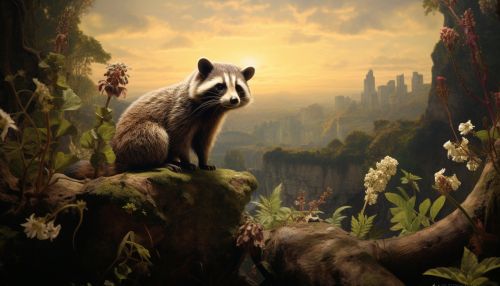Optimal Foraging Theory
Introduction
Optimal Foraging Theory (OFT) is a model that provides a quantitative description of how an organism's behavior is adapted to the search for, and capture of, food. It is a principle of animal behavior that provides a useful framework for understanding diet selection. The theory assumes that animals are maximizing some currency (such as energy intake per unit time) while foraging, in order to increase their fitness.


Historical Background
The roots of Optimal Foraging Theory can be traced back to the 1960s and 1970s when biologists began to apply ideas from economics and decision theory to understand animal behavior. The theory was initially proposed by Robert MacArthur and Eric Pianka, who wanted to quantify the movement of organisms in their ecosystem. They suggested that animals try to maximize their net energy intake per unit of time spent foraging. This idea was further developed by others including John Krebs, who introduced the concept of the 'marginal value theorem'.
Assumptions of Optimal Foraging Theory
Optimal Foraging Theory makes several assumptions about the behavior of animals. These include:
- Animals have perfect knowledge of the types and distribution of resources in their environment.
- Animals make decisions that maximize their fitness, usually measured as the number of offspring produced that survive to reproduce themselves.
- Animals are limited by time and energy, and therefore must make trade-offs between different activities such as foraging, resting, and reproducing.
Models of Optimal Foraging Theory
There are several models within Optimal Foraging Theory that predict specific aspects of an animal's behavior. These include:
- The 'Prey Model' or 'Diet Model', which predicts the types of food an animal should include in its diet, given the availability and profitability of different food types.
- The 'Patch Model' or 'Marginal Value Theorem', which predicts how long an animal should stay in a food patch before moving to a new one.
- The 'Risk-Sensitive Foraging Model', which predicts how an animal should behave when foraging under conditions of uncertainty.
Criticisms and Limitations of Optimal Foraging Theory
While Optimal Foraging Theory has been successful in predicting many aspects of animal behavior, it also has several limitations. These include:
- The theory assumes that animals have perfect knowledge of their environment, which is often not the case.
- It assumes that animals always behave optimally, which may not be true due to constraints such as physiological limitations or predation risk.
- The theory often fails to consider the social context of foraging, such as competition and cooperation among individuals.
Applications of Optimal Foraging Theory
Despite these criticisms, Optimal Foraging Theory has found wide application in the study of animal behavior, ecology, and conservation. It has been used to predict the behavior of a wide range of species, from insects to mammals, and has provided insights into issues such as habitat selection, species distribution, and the impacts of habitat fragmentation.
See Also
Animal Behavior Ecosystem Marginal Value Theorem Risk-Sensitive Foraging Model
